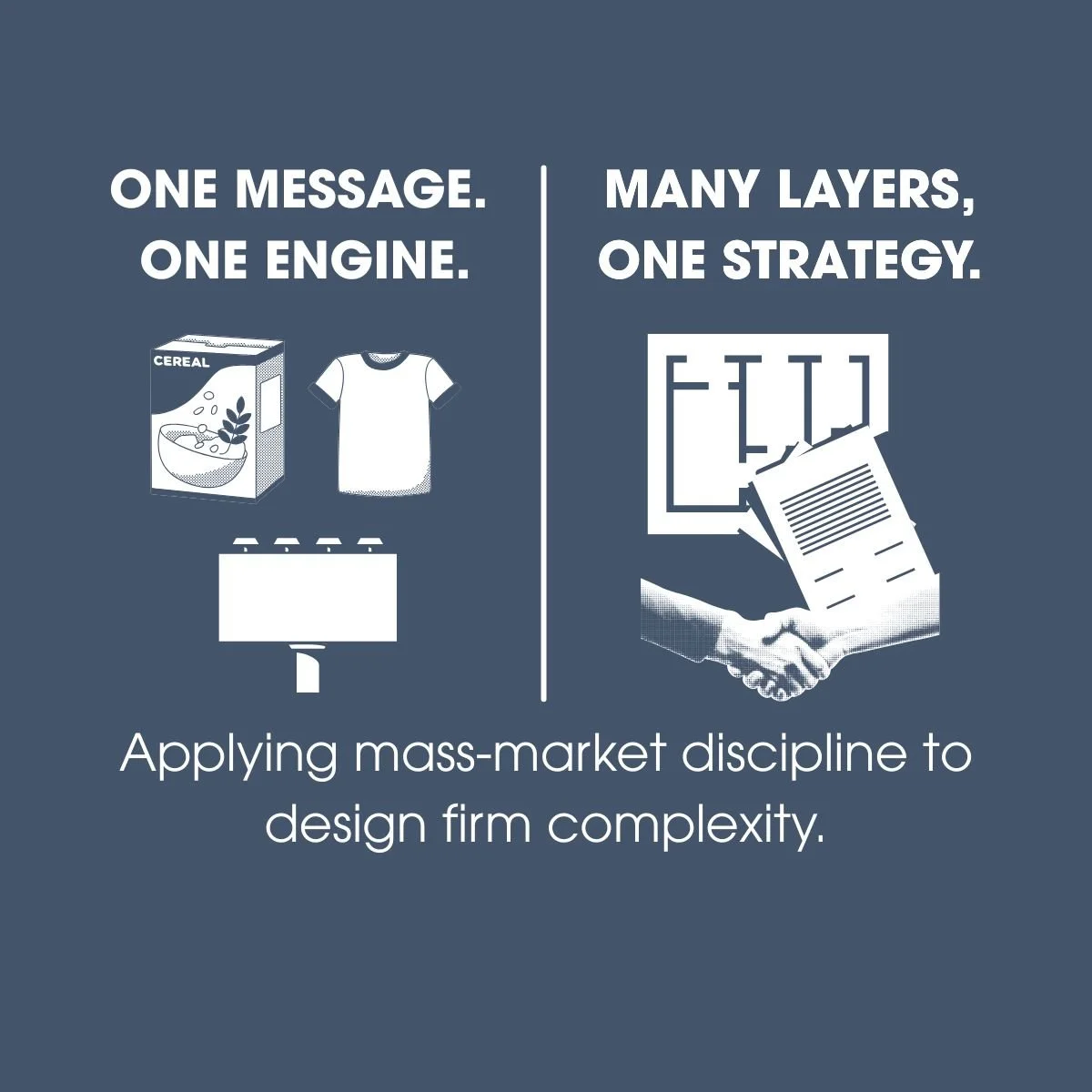Been there, marketed that…. tales from life on the business side of design
HOW I DEVELOPED OOMPH GROUP’S APPROACH TO INTEGRATING MARKETING AND BUSINESS DEVELOPMENT
Today, there's a growing conversation in the architecture, engineering, and construction world about the need to integrate marketing and business development. It’s a timely topic. In many firms, marketing has evolved beyond proposals, and BD is no longer just lunches, golf, and handshakes. Both disciplines are becoming more strategic—and more interdependent.
At Oomph Group, our approach to integration has been shaped by decades of experience marketing in both the design world and beyond. The journey began when I founded Buzz Marketing & Public Relations, to deliver PR, communications, and event planning for design firms and organizations. That work eventually led me into the mass-market consumer world, where I worked alongside global advertising agencies and saw firsthand how marketing, sales, and advertising operate as a unified force in industries like packaged goods and retail.
It was during that time that I came to understand what a truly integrated sales and marketing function looks like. When I returned to the design industry, I began applying those lessons—blending the mindset, strategies, and tactics of mass-market marketing with the complex demands of high-performance architecture. I developed sector-specific strategies for markets like healthcare and hospitality, and the results were tangible: new sectors, new geographies, and large-scale project wins in under 18 months. This work became the foundation for the methodology we use at Oomph today.
Another foundational experience came when I joined a global design firm specializing in amusement and entertainment—a niche unlike any other in architecture: overtly commercial, rapidly expanding into unfamiliar markets, with BD driven by advertising and personal sales. The firm had a sales force operating across Asia, the Middle East, Latin America, and North America—and they needed strategic marketing support. Part of the broader strategy I was tasked with developing involved creating tools, messaging, and tactics that would help them open doors, present compelling pitches, and sustain long-term conversations.
This experience was a game changer because it reframed how I approached marketing. Now, it was no longer just about showcasing the firm—but about understanding the buyer. Every plan and asset had to be designed from the recipient’s perspective: What do they care about? What will make them remember us? What will help our team stand out from the competition?
That shift required rethinking our language, reworking our content, and reassessing every tactic. A beautiful brochure or polished pitch deck were no longer enough. We needed a full ecosystem of tools—sector-specific, client-specific, benefit-driven, and emotionally resonant—that could support a sales cycle lasting anywhere from six to twenty-four months. For me, it cemented what true integration between marketing and business development looks like in practice.
The final evolution, and confirmation, of this thinking came at a publicly traded design firm, where revenue targets are public and performance is closely scrutinized. In such an environment, marketing, BD, and sales cannot operate in silos—the firm’s valuation depends on hitting its numbers. At that level, integration isn’t optional; it’s essential. Every aspect of marketing, communication, outreach, relationship-building, content creation, and proposal development must align under a single, cohesive strategy focused on driving growth.
An integrated approach also reframes the role of proposals, as it’s clear they’re no longer the principal element of business development but the culmination of a complex, multi-step process. A proposal should distill and reinforce everything that’s come before: outreach, messaging, content strategy, and positioning. And it must speak directly to the client’s needs—not simply showcase the firm’s expertise.
Today, this is how Oomph Group works with clients: by helping them define and align their marketing and business development efforts around a clear, interrelated, actionable growth strategy. Positioning isn’t just messaging—it’s the north star guiding the firm’s entire market approach. Targeting isn’t just for social content—it’s about client and sector focus, market priorities, and BD strategy.
And proposals? They shouldn’t be where the marketing investment begins—they’re the final act in a long, strategic performance that starts with insight, builds through awareness-driven storytelling and targeted outreach, and ends in decisive action.
Firms that understand this—and that engage their full teams in executing it—are the ones that will lead. The rest? They’re still throwing brochures at the wall and hoping something sticks.


